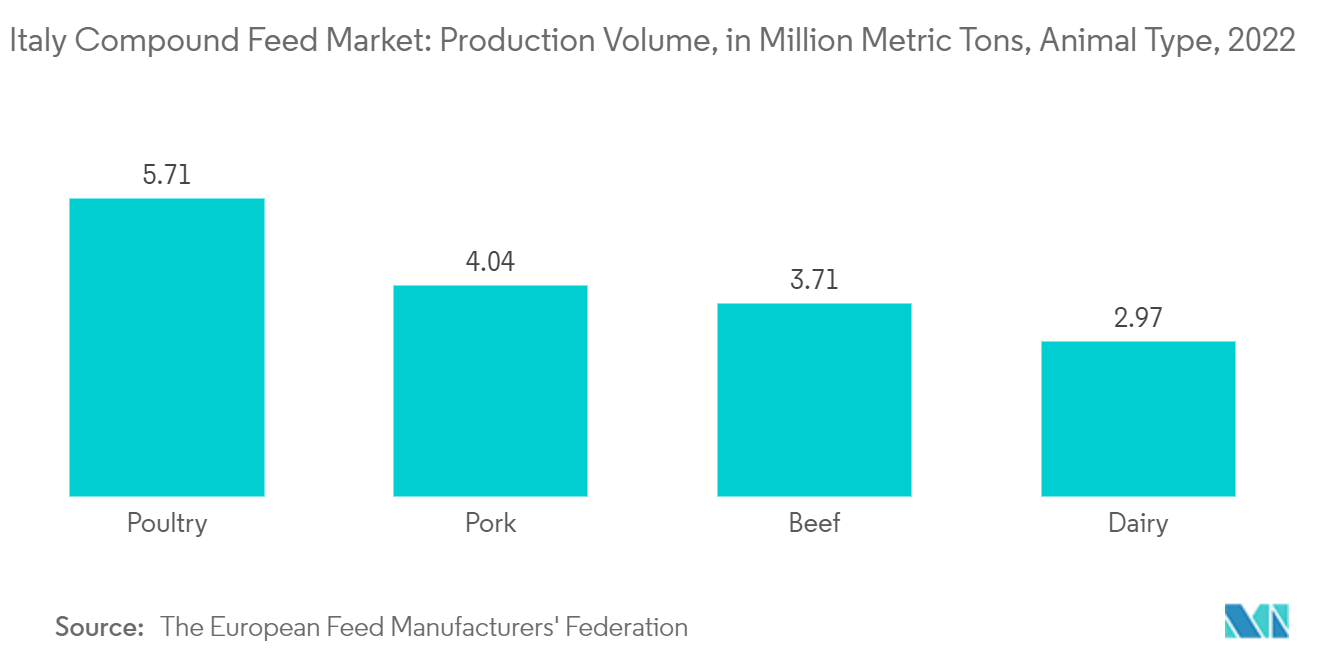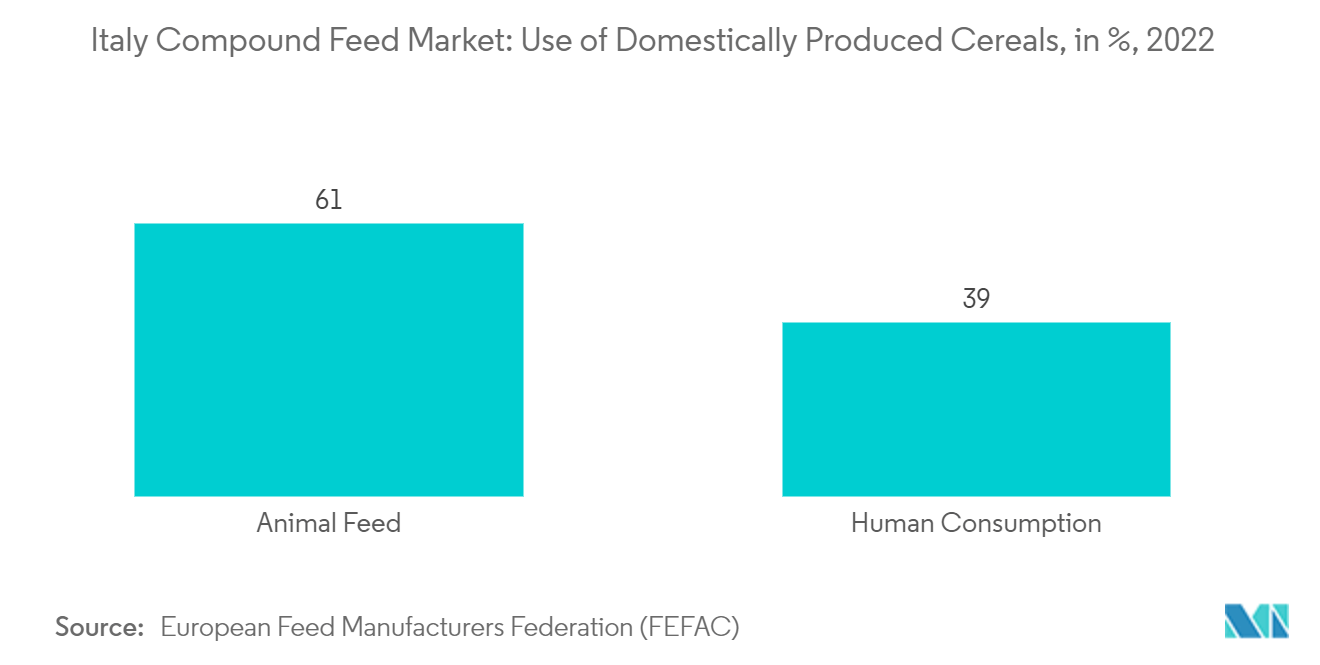Market Trends of Italy Compound Feed Industry
Poultry is the Largest Growing Animal Type in the Segment
- In Italy, the per capita consumption of poultry products has surged, as consumers from diverse demographics increasingly recognize poultry as a vital source of nutrition and protein. This heightened demand has led to a corresponding uptick in meat product production.
- Data from the European Feed Manufacturers' Federation (FEFAC) reveals that in 2022, Italy produced 14.5 million metric tons of compound feed. Notably, poultry feed dominated this production, accounting for 5.7 million metric tons, trailed by pork feed at 4.0 million metric tons. While Italy's overall feed production saw a 4% dip in 2022 compared to 2021, the consumption of livestock products is projected to rise, driven by shifting consumer preferences, thereby bolstering the compound feed market.
- Insights from the National Association of Animal Feed Producers Italy (Assalzoo) highlight a 1.4% decline in the pig farming sector in 2022, while the beef sector witnessed a 1.3% growth, bringing it to 3.7 million metric tons. In Italy, consumers across various demographics regard red meat and poultry products as essential nutritional sources. This perception has fueled a rapid expansion in per capita consumption, subsequently driving up meat product production.

Cereals are the Fastest Growing Segment
- In Italy, cereals utilized in the animal feeding industry boast nutritional components, including 21% to 27% dietary fiber, 12% to 16% crude protein, and 18% to 22% crude fat. The predominant cereals in compound feed manufacturing are corn, barley, and sorghum. The European Feed Manufacturers’ Federation (FEFAC) reports that livestock accounts for 61% of the internal usage of Italy-produced cereals in 2022. Farmers directly use up to 32% of these cereals for animal feeding, while the industrial compound feed industry consumes 29%.
- Corn dominates Italy's feed grain landscape, constituting over 95% of the total production and usage. Following corn, the other significant feed grains include sorghum, barley, and oats, with barley making up one-third of Italy's cereal production in 2022. While nearly two-thirds of Italy's cereals cater to animal feed, the remaining third is allocated for human consumption. Price fluctuations in cereals, driven by production variances across regions, pose challenges for their use in compound feed. Nonetheless, feed manufacturers are increasingly turning to cereal by-products, attracted by their cost-effectiveness.



